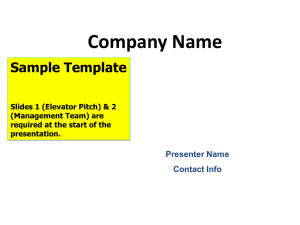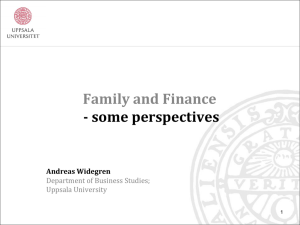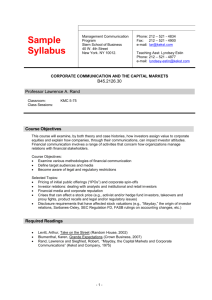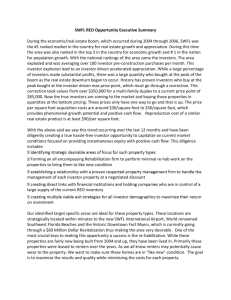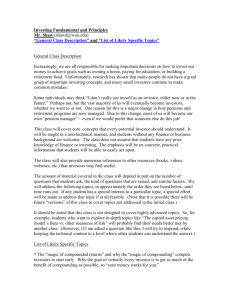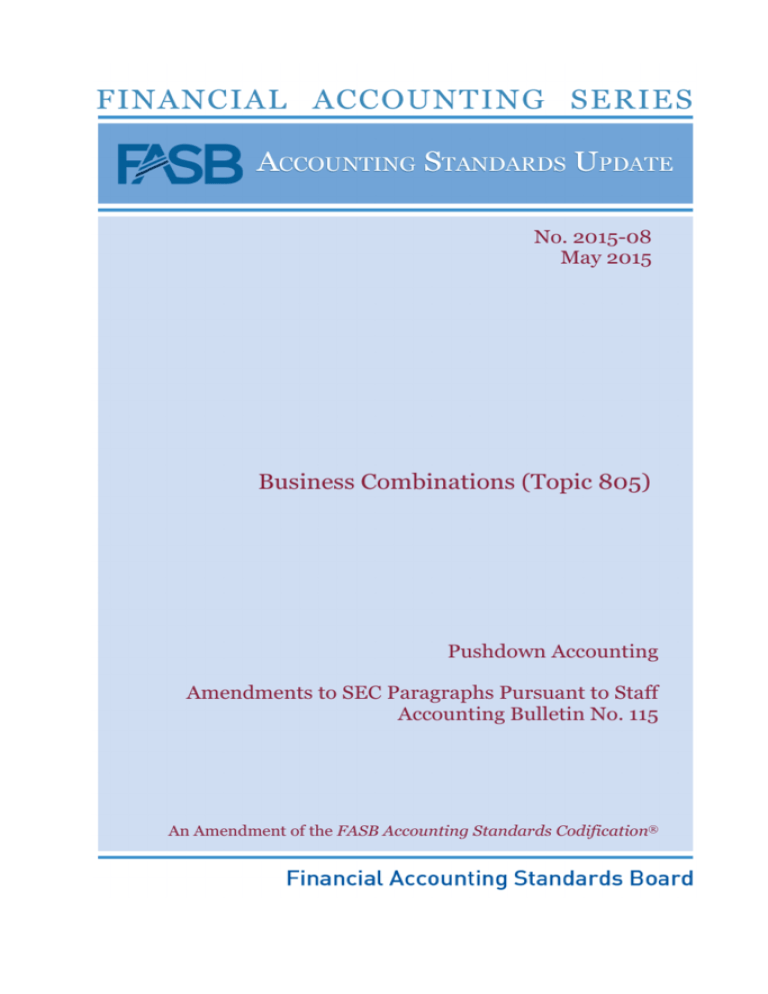
No. 2015-08
May 2015
Business Combinations (Topic 805)
Pushdown Accounting
Amendments to SEC Paragraphs Pursuant to Staff
Accounting Bulletin No. 115
An Amendment of the FASB Accounting Standards Codification®
The FASB Accounting Standards Codification® is the source of authoritative
generally accepted accounting principles (GAAP) recognized by the FASB to be
applied by nongovernmental entities. An Accounting Standards Update is not
authoritative; rather, it is a document that communicates how the Accounting
Standards Codification is being amended. It also provides other information to
help a user of GAAP understand how and why GAAP is changing and when the
changes will be effective.
For additional copies of this Accounting Standards Update and information on
applicable prices and discount rates contact:
Order Department
Financial Accounting Standards Board
401 Merritt 7
PO Box 5116
Norwalk, CT 06856-5116
Please ask for our Product Code No. ASU2015-08.
FINANCIAL ACCOUNTING SERIES (ISSN 0885-9051) is published quarterly by
the Financial Accounting Foundation. Periodicals postage paid at Norwalk, CT
and at additional mailing offices. The full subscription rate is $242 per year.
POSTMASTER: Send address changes to Financial Accounting Standards
Board, 401 Merritt 7, PO Box 5116, Norwalk, CT 06856-5116. | No. 415
Copyright © 2015 by Financial Accounting Foundation. All rights reserved.
Content copyrighted by Financial Accounting Foundation may not be
reproduced, stored in a retrieval system, or transmitted, in any form or by any
means, electronic, mechanical, photocopying, recording, or otherwise,
without the prior written permission of the Financial Accounting Foundation.
Financial Accounting Foundation claims no copyright in any portion hereof
that constitutes a work of the United States Government.
Accounting Standards Update
No. 2015-08
May 2015
Business Combinations (Topic 805)
Pushdown Accounting
Amendments to SEC Paragraphs Pursuant to Staff
Accounting Bulletin No. 115
An Amendment of the FASB Accounting Standards Codification®
Financial Accounting Standards Board
Accounting Standards Update 2015-08
Business Combinations (Topic 805)
Pushdown Accounting
Amendments to SEC Paragraphs Pursuant to Staff
Accounting Bulletin No. 115
May 2015
CONTENTS
Page
Numbers
Amendments to the FASB Accounting Standards Codification® .....................1–11
Amendments to the XBRL Taxonomy .................................................................12
Amendments to the
FASB Accounting Standards Codification®
Securities and Exchange Commission (SEC) Content
Introduction
1.
The Accounting Standards Codification is amended as described in
paragraphs 2–7. In some cases, to put the change in context, not only are the
amended paragraphs shown but also the preceding and following paragraphs.
Added text is underlined, and deleted text is struck out.
Amendments Pursuant to the Issuance of Staff Accounting
Bulletin No. 115
This Accounting Standards Update amends various SEC paragraphs pursuant to
the issuance of Staff Accounting Bulletin No. 115.
Amendments to Subtopic 805-50
2.
Supersede paragraph 805-50-S25-1 and its related heading and the
Subsection title, with no link to a transition paragraph, as follows:
Business Combinations—Related Issues
Recognition
New Basis of Accounting (Pushdown)
> Push-Down Basis of Accounting Required in Limited Circumstances
805-50-S25-1 Paragraph superseded by Accounting Standards Update 201508.See paragraph 805-50-S99-1, SAB Topic 5.J, for SEC Staff views regarding
various push-down basis of accounting issues.
3.
Supersede paragraphs 805-50-S30-1 through S30-2 and their related
headings and amend the Subsection title, with no link to a transition paragraph,
as follows:
Initial Measurement
Transactions between Entities under Common ControlNew Basis of
Accounting (Pushdown)
1
> Push-Down Basis of Accounting Required in Certain Limited
Circumstances
805-50-S30-1 Paragraph superseded by Accounting Standards Update 201508.See paragraph 805-50-S99-1, SAB Topic 5.J, for SEC Staff views regarding
issues pertaining to push-down basis of accounting.
> Change of Accounting Basis in Master Limited Partnership Transactions
805-50-S30-2 Paragraph superseded by Accounting Standards Update 201508.See paragraph 805-50-S99-3, SEC Observer Comment: Change of
Accounting Basis in Master Limited Partnership Transactions, for SEC Staff
views regarding change in basis of accounting issues in master limited
partnership transactions.
> Measurement of Certain Transfers Between Entities Under Common
Control in the Separate Financial Statements of Each Entity
805-50-S30-3 See paragraph 805-50-S99-4, SEC Observer Comment:
Measurement of Certain Transfers Between Entities Under Common Control in
the Separate Financial Statements of Each Entity for SEC Staff views on carrying
over historical cost to record, in the separate financial statements of each entity,
certain transfers between companies under common control or between a parent
and its subsidiary.
4.
Supersede paragraph 805-50-S50-1 and its related heading and the
Subsection title, with no link to a transition paragraph, as follows:
Disclosure
New Basis of Accounting (Pushdown)
> Push-Down Basis of Accounting Required in Certain Limited
Circumstances
805-50-S50-1 Paragraph superseded by Accounting Standards Update 201508.See paragraph 805-50-S99-1, SAB Topic 5.J, for SEC Staff views regarding
push-down basis of accounting.
5.
Supersede paragraph 805-50-S55-1 and its related heading and the
Subsection title, with no link to a transition paragraph, as follows:
Implementation Guidance and Illustrations
New Basis of Accounting (Pushdown)
> Push-Down Accounting
805-50-S55-1 Paragraph superseded by Accounting Standards Update 201508.See paragraph 805-50-S99-2, SEC Staff Announcement: Push-Down
Accounting, for SEC Staff views regarding push-down accounting.
2
6.
Supersede paragraphs 805-50-S99-1 through S99-3 and their related
headings and amend the Subsection title, with no link to a transition paragraph,
as follows:
SEC Materials
Transactions between Entities under Common ControlNew Basis of
Accounting (Pushdown)
> SEC Staff Guidance
> > Staff Accounting Bulletins
> > > SAB Topic 5.J, New Basis of Accounting Required in Certain
Circumstances
805-50-S99-1 Paragraph superseded by Accounting Standards Update 201508.The following is the text of SAB Topic 5.J, New Basis of Accounting Required
in Certain Circumstances.
Facts: Company A (or Company A and related persons) acquired
substantially all of the common stock of Company B in one or a series of
purchase transactions.
Question 1: Must Company B’s financial statements presented in either its
own or Company A’s subsequent filings with the Commission reflect the new
basis of accounting arising from Company A’s acquisition of Company B
when Company B’s separate corporate entity is retained?
Interpretive Response: Yes. The staff believes that purchase transactions
that result in an entity becoming substantially wholly owned (as defined in
Rule 1-02(aa) of Regulation S-X) establish a new basis of accounting for the
purchased assets and liabilities.
When the form of ownership is within the control of the parent the basis of
accounting for purchased assets and liabilities should be the same
regardless of whether the entity continues to exist or is merged into the
parent’s operations. Therefore, Company B’s separate financial statements
should reflect the new basis of accounting recorded by Company A upon
acquisition (i.e., “pushed down” basis).
Question 2: What is the staff’s position if Company A acquired less than
substantially all of the common stock of Company B or Company B had
publicly held debt or preferred stock at the time Company B became wholly
owned?
Interpretative Response: The staff recognizes that the existence of
outstanding public debt, preferred stock or a significant non-controlling
interest in a subsidiary might impact the parent’s ability to control the form of
ownership. Although encouraging its use, the staff generally does not insist
on the application of push down accounting in these circumstances.
3
Question 3: Company A borrows funds to acquire substantially all of the
common stock of Company B. Company B subsequently files a registration
statement in connection with a public offering of its stock or debt. FN6
Should Company B’s new basis (“push down”) financial statements include
Company A’s debt related to its purchase of Company B?
FN6 The guidance in this SAB should also be considered for
Company B’s separate financial statements included in its public
offering following Company B’s spin-off or carve-out from Company
A.
Interpretive Response: The staff believes that Company A’s debt, FN7
related interest expense, and allocable debt issue costs should be reflected
in Company B’s financial statements included in the public offering (or an
initial registration under the Exchange Act) if: (1) Company B is to assume
the debt of Company A, either presently or in a planned transaction in the
future; (2) the proceeds of a debt or equity offering of Company B will be
used to retire all or a part of Company A’s debt; or (3) Company B
guarantees or pledges its assets as collateral for Company A’s debt.
FN7 The guidance in this SAB should also be considered where
Company A has financed the acquisition of Company B through the
issuance of mandatory redeemable preferred stock.
Other relationships may exist between Company A and Company B, such as
the pledge of Company B’s stock as collateral for Company A’s debt. FN8
While in this latter situation, it may be clear that Company B’s cash flows will
service all or part of Company A’s debt, the staff does not insist that the debt
be reflected in Company B’s financial statements providing there is full and
prominent disclosure of the relationship between Companies A and B and
the actual or potential cash flow commitment. In this regard, the staff
believes that FASB ASC Topic 450, Contingencies, FASB ASC Topic 850,
Related Party Disclosures, and FASB ASC Topic 460, Guarantees require
sufficient disclosure to allow users of Company B’s financial statements to
fully understand the impact of the relationship on Company B’s present and
future cash flows. Rule 4-08(e) of Regulation S-X also requires disclosure of
restrictions which limit the payment of dividends. Therefore, the staff
believes that the equity section of Company B’s balance sheet and any pro
forma financial information and capitalization tables should clearly disclose
that this arrangement exists. FN9
FN8 The staff does not believe Company B’s financial statements
must reflect the debt in this situation because in the event of default
on the debt by Company A, the debt holder(s) would only be
entitled to B’s stock held by Company A. Other equity or debt
holders of Company B would retain their priority with respect to the
net assets of Company B.
4
FN9 For example, the staff has noted that certain registrants have
indicated on the face of such financial statements (as part of the
stockholder’s equity section) the actual or potential financing
arrangement and the registrant’s intent to pay dividends to satisfy
its parent’s debt service requirements. The staff believes such
disclosures are useful to highlight the existence of arrangements
that could result in the use of Company B’s cash to service
Company A’s debt.
Regardless of whether the debt is reflected in Company B’s financial
statements, the notes to Company B’s financial statements should generally
disclose, at a minimum: (1) the relationship between Company A and
Company B; (2) a description of any arrangements that result in Company
B’s guarantee, pledge of assets FN10 or stock, etc. that provides security for
Company A’s debt; (3) the extent (in the aggregate and for each of the five
years subsequent to the date of the latest balance sheet presented) to which
Company A is dependent on Company B’s cash flows to service its debt and
the method by which this will occur; and (4) the impact of such cash flows on
Company B’s ability to pay dividends or other amounts to holders of its
securities.
FN10 A material asset pledge should be clearly indicated on the
face of the balance sheet. For example, if all or substantially all of
the assets are pledged, the “assets” and “total assets” captions
should include parenthetically: “pledged for parent company debtSee Note X.”
Additionally, the staff believes Company B’s Management’s Discussion and
Analysis of Financial Condition and Results of Operations should discuss
any material impact of its servicing of Company A’s debt on its own liquidity
pursuant to Item 303(a)(1) of Regulation S-K.
> > Announcements Made by SEC Staff at Emerging Issues Task Force
(EITF) Meetings
> > > SEC Staff Announcement: Push-Down Accounting
805-50-S99-2 Paragraph superseded by Accounting Standards Update 201508.The following is the text of SEC Staff Announcement: Push Down Accounting.
The SEC staff has received a number of inquiries regarding the facts and
circumstances under which push-down accounting is required to be applied
by SEC registrants. In Staff Accounting Bulletin Topic No. 5.J, Push Down
Basis of Accounting Required in Certain Limited Circumstances [805-50S99-1], the SEC staff indicated that it believes push-down accounting is
required in “purchase transactions that result in an entity becoming
substantially wholly owned.”
5
The SEC staff believes that the views in SAB Topic 5.J [805-50-S99-1] also
should be followed in the context of a company that becomes substantially
wholly owned as a result of a series of related and anticipated transactions.
In determining whether a company has become substantially wholly owned,
the SEC staff has stated that push-down accounting would be required if 95
percent or more of the company has been acquired (unless the company
has outstanding public debt or preferred stock that may impact the acquirer’s
ability to control the form of ownership of the company), permitted if 80
percent to 95 percent has been acquired, and prohibited if less than 80
percent of the company is acquired.
For example, if a parent company purchases all the outstanding
noncontrolling interest of a majority-owned subsidiary (which has no public
debt outstanding) in a single transaction or a series of related and
anticipated transactions which includes the subsequent issuance of
subsidiary shares to new investors, the SEC staff believes that push-down
accounting would be required to be applied in the subsidiary’s financial
statements, regardless of the size of the noncontrolling interest sold to new
investors. The SEC staff believes that push-down accounting would be
required even though the subsidiary became wholly owned for only a short
time and there was a plan for the subsidiary to issue shares subsequent to
becoming wholly owned.
In applying SAB Topic 5.J [805-50-S99-1] to specific facts and
circumstances, a registrant must distinguish between transactions resulting
in only a significant change in (recapitalization of) a company’s ownership
(for example, as the result of an initial public offering for which push-down
accounting is not required) and purchase transactions in which the company
becomes substantially wholly owned and for which push-down accounting is
required.
For purposes of determining whether a company has become “substantially
wholly owned” as the result of a single transaction or a series of related and
anticipated transactions in which investors acquire ownership interests, the
SEC staff believes that it is appropriate to aggregate the holdings of those
investors who both “mutually promote” the acquisition and “collaborate” on
the subsequent control of the investee company (the collaborative group).
That is, the SEC staff believes that push-down accounting is required if a
company becomes substantially wholly owned by a group of investors who
act together as effectively one investor and are able to control the form of
ownership of the investee.
The SEC staff believes that under a “mutual promotion and subsequent
collaboration” model, a member of a collaborative group would be any
investor FN1 that helps to consummate the acquisition and works or
cooperates with the subsequent control of the acquired company. For
purposes of assessing whether an investor is part of a collaborative group,
6
the SEC staff believes that a rebuttable presumption exists that any investor
investing at the same time as or in reasonable proximity to the time others
invest in the investee is part of the collaborative group with the other
investor(s). Determination of whether such a presumption is rebutted
necessarily will involve the consideration of all pertinent facts and
circumstances. Among the factors considered by the SEC staff FN2 that
would be indicative of an investor not being part of a collaborative group
include:
FN1 Preexisting, or rollover, investors should be evaluated for
inclusion in the collaborative group on the same basis as new
investors.
FN2 In an assessment of whether the presumption is overcome,
any single factor should not be considered in isolation.
I. Independence
The investor is substantive. For example, the investor is an entity with
substantial capital (that is, comparable to that expected for a substantive
business with similar risks and rewards) and other operations. In contrast, an
investor that is a special-purpose entity whose only substantive assets or
operations are its investment in the investee generally would not be
considered substantive.
The investor is independent of and unaffiliated with all other investors.
The investor’s investment in the investee is not contingent upon any other
investor making investments in the investee.
The investor does not have other relationships with any other investor that
are material to either investor.
II. Risk of Ownership
The investor is investing at fair value.
The investor invests funds from its own resources.
The investor fully shares with all other investors in the risks and rewards of
ownership in the investee in proportion to its class and amount of
investment. That is, the investor’s downside risk or upside reward are not
limited, and the investor does not receive any other direct or indirect benefits
from any other investor as a result of investing in the investee. FN3
FN3 Put options, call options, tag-along rights, and drag-along
rights should be carefully evaluated. They may act to limit an
investor’s risk and rewards of ownership, effective voting rights, or
ability to sell its investee shares. A tag-along right grants a
shareholder the option to participate in a sale of shares by the
controlling shareholder or collaborative group, generally under the
7
same terms and in the same proportion. A drag-along right grants
the controlling shareholder or collaborative group the option to
compel shareholders subject to the drag-along provision to sell their
shares in a transaction in which the controlling shareholder or
collaborative group transfers control of the company, generally
under the same terms and in the same proportion.
The funds invested by the investor are not directly or indirectly provided or
guaranteed by any other investor.
The investor is at risk only for its own investment in the investee and not
another’s investment in the investee. That is, the investor is not providing or
guaranteeing any part of another investor’s investment in the investee. FN4
FN4 See footnote 3.
III. Promotion
The investor did not solicit other parties to invest in the investee.
IV. Subsequent Collaboration
The investor is free to exercise its voting rights in any and all shareholder
votes.
The investor does not have disproportionate or special rights that other
investors do not have, such as a guaranteed seat(s) on the investee’s board,
required supermajority voting rights for major or significant corporate
decisions, guaranteed consent rights over corporate actions, guaranteed or
specified returns, and so forth.
The investor’s ability to sell its investee shares is not restricted, except as
provided by the securities laws or by what is reasonable and customary in
individually negotiated investment transactions for closely held companies
(for example, a right of first refusal held by the investee on the investor’s
shares in the event of a bona fide offer from a third party).
The SEC staff has considered the applicability of push-down accounting in
transactions in which financial investors, acting together effectively as one
investor (that is, as a collaborative group), acquire ownership interests in a
company. The investee company experiences a significant change in
ownership, but no single financial investor obtains substantially all of the
ownership interest in the company. Consider the following example:
Investor C formulates a plan to acquire and consolidate companies in a
highly fragmented industry in order to achieve economies of scale. Investor
C approaches Investors A and B with the plan, and they agree to invest with
Investor C in the acquisition and consolidation plan. Investors A, B, and C
(the Investors) are each substantive entities, with no overlap of employees
but with a number of prior joint investments and other business relationships
8
that are individually material to the Investors. Furthermore, upon completion
of the current plan, the resulting entity is expected to be material to each
individual investor.
Shortly thereafter, Company D is identified as an acquisition candidate in the
industry. The Investors negotiate a legally binding agreement with Company
D to acquire 100 percent of the outstanding common stock of Company D
(to be held 40 percent, 40 percent, and 20 percent by Investors A, B, and C,
respectively) for cash. In connection with the change in ownership, Company
D’s bylaws are amended to provide that the Investors each have the right to
elect an equal number of members of Company D’s board of directors.
Company D’s board of directors also is to include Company D’s chief
executive officer and two independent directors. In addition, the bylaws are
amended to provide that no action requiring board of directors’ approval may
be approved without consent of a majority of the board as well as a majority
of the Investor A directors, the Investor B directors, and the Investor C
directors, each voting as a separate class. Effectively, any significant
corporate action by Company D would require the approval of each investor.
Stock held by the Investors is to be restricted as to transfer for five years,
after which each of the Investors has a right of first refusal and tag-along
rights if some part of the group of Investors decides to sell its interests.
The funds invested by each investor come from the respective investor’s
resources; however, Investors A and B provide Investor C certain limited
first-loss guarantees of its investment.
In the context of this example, the SEC staff concluded that Investors A, B,
and C did not overcome the presumption that they were members of a
collaborative group of investors. Furthermore, since the collaborative group
of Investors acquired 100 percent of the outstanding common stock of
Company D, the SEC staff concluded that push-down accounting was
required to be applied in Company D’s financial statements. The factors the
SEC staff considered in reaching its conclusion that the presumption was not
rebutted included, among others, the following:
Investors A, B, and C acted in concert to negotiate their concurrent
investments in Company D, which were made pursuant to the same
contract.
The investments by Investors A, B, and C were being made in connection
with a broader strategic initiative the three investors were pursuing together.
There were a number of prior business relationships between the Investors
that were material to the Investors.
Investor C does not share fully in the risks and rewards of ownership due to
the limited first-loss guarantees provided by Investors A and B.
9
No single Investor controlled the board of directors, and due to the
amendments to the bylaws regarding board representation and voting, any
of the three Investors could unilaterally block any board action. In other
words, Investors A, B, and C were compelled to collaborate on the
subsequent control of Company D.
There are restrictions on each Investor’s ability to transfer its shares.
> > Comments Made by SEC Observer at EITF Meetings
> > > SEC Observer Comment: Change of Accounting Basis in Master
Limited Partnership Transactions
805-50-S99-3 Paragraph superseded by Accounting Standards Update 201508.The following is the text of SEC Observer Comment: Change of Accounting
Basis in Master Limited Partnership Transactions.
For a new basis of accounting to be appropriate, the SEC staff will require
(1) the Master Limited Partnership to sell 80 percent or more of the
partnership units to the public and (2) the limited partners to have the ability
to replace the general partner through a reasonable vote. If those conditions
are met, the SEC staff will not object to a new basis of accounting to the
extent of the percentage change in ownership. For additional guidance on
new basis of accounting in an MLP, see paragraph 805-50-30-7.
> > > SEC Observer Comment: Measurement of Certain Transfers Between
Entities Under Common Control in the Separate Financial Statements of
Each Entity
805-50-S99-4 The following is the text of the SEC Observer Comment:
Measurement of Certain Transfers Between Entities Under Common Control in
the Separate Financial Statements of Each Entity.
The SEC staff’s views on carrying over historical cost to record, in the
separate financial statements of each entity, transfers between companies
under common control or between a parent and its subsidiary are focused
on transfers of net assets (as in a business combination) or long-lived
assets. Those views would not normally apply to recurring transactions for
which valuation is not in question (such as routine transfers of inventory) in
the separate financial statements of each entity that is a party to the
transaction.
7.
Amend paragraph 805-50-S00-1, by adding the following items to the table,
as follows:
805-50-S00-1 The following table identifies the changes made to this Subtopic.
10
Paragraph
805-50-S25-1
805-50-S30-1
805-50-S30-2
805-50-S50-1
805-50-S55-1
805-50-S99-1
through S99-3
Action
Superseded
Superseded
Superseded
Superseded
Superseded
Superseded
Accounting
Standards
Update
2015-08
2015-08
2015-08
2015-08
2015-08
2015-08
Date
05/08/2015
05/08/2015
05/08/2015
05/08/2015
05/08/2015
05/08/2015
11
Amendments to the XBRL Taxonomy
The amendments to the FASB Accounting Standards Codification® in this
Accounting Standards Update require changes to the U.S. GAAP Financial
Reporting Taxonomy (Taxonomy). Those changes, which will be incorporated
into the proposed 2016 Taxonomy, are available for public comment through
ASU Taxonomy Changes provided at www.fasb.org and finalized as part of the
annual release process starting in September 2015.
12

